Books & Special Issues by Andreas Weber

Pieter van Oort, geboren in 1804 in Utrecht, was een van de meest getalenteerde Nederlandse teken... more Pieter van Oort, geboren in 1804 in Utrecht, was een van de meest getalenteerde Nederlandse tekenaars van dieren en planten van zijn tijd. In opdracht van koning Willem I vertrok hij in 1825 naar de toenmalige Nederlandse koloniën in Zuidoost-Azië, om daar in dienst van de Natuurkundige Commissie de flora en fauna vast te leggen. Met de natuuronderzoekers van de Commissie reisde Van Oort tot zijn dood in 1834 rond in de regio, waar zij duizenden specimens verzamelden, beschreven en tekenden voor het net in Leiden opgerichte Rijksmuseum van Natuurlijke Historie. Kunstenaar op Sumatra bevat de volledige transcripties van de dagboeken die Pieter van Oort bijhield tijdens zijn reizen op Sumatra in 1833 en 1834. In deze turbulente jaren schrijft hij uitgebreid over zijn belevenissen en ontmoetingen, over de natuur, cultuur en lokale gebruiken, maar ook over het oorlogsgeweld tijdens de eindfase van de Padri-oorlogen, waar hij en zijn reisgenoten in terechtkwamen. De verslaglegging van zijn eerdere reizen (1825-1833) is te vinden in deel 119 in de reeks van de Linschoten-Vereeniging: Kunstenaar op Java. Zie ook: https://www.walburgpers.nl/nl/book/9789462494978/kunstenaar-op-sumatra

Pieter van Oort, geboren in 1804 in Utrecht, was een van de meest getalenteerde Nederlandse teken... more Pieter van Oort, geboren in 1804 in Utrecht, was een van de meest getalenteerde Nederlandse tekenaars van dieren en planten van zijn tijd. In opdracht van koning Willem I vertrok hij in 1825 naar de toenmalige Nederlandse koloniën in Zuidoost-Azië, om daar in dienst van de Natuurkundige Commissie de flora en fauna vast te leggen. Met de natuuronderzoekers van de Commissie reisde Van Oort tot zijn dood in 1834 rond in de regio, waar zij duizenden specimens verzamelden, beschreven en tekenden voor het net in Leiden opgerichte Rijksmuseum van Natuurlijke Historie.
Kunstenaar op Java bevat de volledige transcripties van de reisdagboeken die Pieter van Oort bijhield tijdens zijn reizen op Java. Hij beschrijft met veel oog voor detail zijn dagelijks leven, zijn ontmoetingen, het landschap en de monumenten, lokale gebruiken en oude verhalen. De in deze editie opgenomen selectie tekeningen, die hij tijdens en vlak na de Java-Oorlog (1825-1830) maakte, schetst een fascinerend beeld van een flora en fauna zoals die vandaag niet meer in de Indonesische archipel te vinden is.
De verslaglegging van zijn latere reizen (1833-1834) is te vinden in deel 120 in de reeks van de Linschoten-Vereeniging: Kunstenaar op Sumatra.
Visual edition of the archive of the Natuurkundige Commissie (1820-1850), see also: https://dh.br... more Visual edition of the archive of the Natuurkundige Commissie (1820-1850), see also: https://dh.brill.com/nco/

Locations of Knowledge in Dutch Contexts brings together scholars who shed light on the ways loca... more Locations of Knowledge in Dutch Contexts brings together scholars who shed light on the ways locations gave shape to scientific knowledge practices in the Dutch Republic and the Kingdom of the Netherlands. This interdisciplinary volume uses four hundred years of Dutch history as a laboratory to investigate spatialized understandings of the history of knowledge. By conceptualizing locations of knowing as time-specific configurations of actors, artefacts, and activities, contributors to this volume not only examine cities as specific kind of locations, but also analyse the regionally and globally networked and transformative character of locations. Many of the locations which are studied in this volume are still visible until the present day. For the TOC and more info about the edited volume see: https://brill.com/view/title/24990?lang=en Intro is here: https://www.academia.edu/40695992/The_Netherlands_as_a_Laboratory_of_Knowing_Introduction_to_Locations_of_Knowledge_in_Dutch_Contexts

Studium: Tijdschrift voor Wetenschaps- en Universiteitsgeschiedenis | Revue d’Histoire des Sciences et des Universités, 2018
Contributors to this theme issue examine the history of the life sciences at the Botanical Garden... more Contributors to this theme issue examine the history of the life sciences at the Botanical Gardens in Bogor (Kebun Raya Bogor) in Indonesia. Each of the essays in this theme issue focusses on a major transformation that the garden, its networks, and staff underwent in the nineteenth and twentieth centuries. Before summarizing individual contributions, this introductory essay familiarizes readers with more recent scholarship in the field. Taken together, the essays in our theme issue suggest that the practice of the life sciences at the Gardens can be best analyzed as the outcome of historical processes of coordination and competition in which different disciplines, communities, and networks not only in insular Southeast Asia but also other parts of the world played a formative role.
Full text is available at: https://openaccess.leidenuniv.nl/handle/1887/18924
The German chemist... more Full text is available at: https://openaccess.leidenuniv.nl/handle/1887/18924
The German chemist-apothecary Caspar Georg Carl Reinwardt (1773-1854) offers a fascinating window on Dutch culture and society in the late eighteenth and early nineteenth centuries. By providing an in-depth analysis of his multi-faceted career in the Netherlands and the Malay Archipelago, this study sheds light on the co-evolutionary character of science, governance, and empire. It argues that seeds of Reinwardt’s professional flexibility lay in his practical training in one of Amsterdam’s chemical workshops and his socialization in a broader cultural context where the improvement of society and economy played a crucial role.
Journal contributions & essay reviews by Andreas Weber
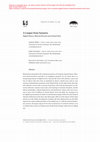
Nuncius, 2024
Researchers interested in the colonial provenance of European natural history collections find th... more Researchers interested in the colonial provenance of European natural history collections find themselves currently in an ambiguous position. On one hand, there is a fast-growing amount of digital services that provide them with statistics, names and lists of objects that have been accumulated in former colonial areas and are now stored in natural history museums in the Global North. On the other hand, these digital collection services fail to provide researchers with archival information on historical collection contexts, local names and meanings of animals and plants, and the labour, knowledges, colonial infrastructure and (epistemic) violence that were necessary to move tens of millions of natural objects across the globe. By zooming in on the digital representation of a black-crested Sumatran langur collected on the island of Sumatra (Indonesia) in the 1830s, this short paper reflects on the impact of these data absences on the further development of large-scale data infrastructures in the field. Inspired by earlier problematization of the digital turn in collection-based biodiversity sciences, this paper argues for the more sustained use of archival evidence so as to rethink what it means to infrastructure ‘biodiversity heritage’ collections in a digital age.

Wacana Journal of Social and Humanity Studies, 2022
This essay examines how local draughtsmen using their visual expertise shaped natural historical ... more This essay examines how local draughtsmen using their visual expertise shaped natural historical knowledge production in colonial Indonesia in the early nineteenth century. The persons at the core of this essay are Tsing Wang Ho and Pieter van Oort, both draughtsmen who worked for the Natuurkundige Commissie voor Nederlandsch-Indië (Committee of Natural History of the Netherlands Indies). By zooming in on the Committee’s fieldwork in Java in the 1830s, this essay highlights that producing scientific drawings of animals and plants was a challenging endeavour. Despite detailed instructions from Europe and the logistical support of the colonial government in Batavia, the success of the Committee's fieldwork also depended on local visual and natural expertise. By shifting the analytical focus from European draughtsmen and naturalists to local visual and natural expertise, this essay offers readers glimpses on a cross-cultural learning process which, in the long run, reshaped the visual repertoire on which taxonomic and biodiversity research has since then built on.

Ecological Informatics, 2021
In this paper we analyse the classification of zoological illustrations. Historically, zoological... more In this paper we analyse the classification of zoological illustrations. Historically, zoological illustrations were the modus operandi for the documentation of new species, and now serve as crucial sources for long-term ecological and biodiversity research. By employing computational methods for classification, the data can be made amenable to research. Automated species identification is challenging due to the long-tailed nature of the data, and the millions of possible classes in the species taxonomy. Success commonly depends on large training sets with many examples per class, but images from only a subset of classes are digitally available, and many images are unlabelled, since labelling requires domain expertise. We explore zero-shot learning to address the problem, where features are learned from classes with medium to large samples, which are then transferred to recognise classes with few or no training samples. We specifically explore how distributed, multi-modal background knowledge from data providers, such as the Global Biodiversity Information Facility (GBIF), iNaturalist, and the Biodiversity Heritage Library (BHL), can be used to share knowledge between classes for zero-shot learning. We train a prototypical network for zero-shot classification, and introduce fused prototypes (FP) and hierarchical prototype loss (HPL) to optimise the model. Finally, we analyse the performance of the model for use in real-world applications. The experimental results are encouraging, indicating potential for use of such models in an expert support system, but also express the difficulty of our task, showing a necessity for research into computer vision methods that are able to learn from small samples.
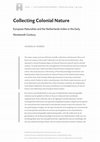
BMGN — Low Countries Historical Review, 2019
The sheer variety and size of Dutch scientific collections of Indonesia’s flora and fauna are uni... more The sheer variety and size of Dutch scientific collections of Indonesia’s flora and fauna are unique in the world. Gathered over the last two hundred years, they represent a shared European legacy of natural historical research and its colonial context. To understand how the entanglement of transnational and transimperial networks and actors within the field of natural history shaped the study of nature, this essay focusses on the history of the Natuurkundige Commissie voor Nederlandsch-Indië (Committee for Natural History of the Netherlands Indies), one of the main state-funded collecting enterprises in the early nineteenth century world. Similar to other colonial powers, the Dutch made extensive use of local informants and naturalists from other European countries. Beginning with the Committee’s fieldwork, this essay contributes to an entangled history of natural history and collecting in the emergent Dutch empire.
This essay forms part of a special issue on the European History of the former Dutch Empire in insular Southeast Asia, edited by Bernhard Schär (ETH Zürich)
Itinerario: Journal of Imperial and Global Interactions, 2019

Studium: Tijdschrift voor Wetenschaps- en Universiteitsgeschiedenis | Revue d’Histoire des Sciences et des Université, 2018
This essay provides a fresh view on early the history of the botanical garden Buitenzorg by zoomi... more This essay provides a fresh view on early the history of the botanical garden Buitenzorg by zooming in on the activities of the garden’s first and second directors: Caspar Georg Carl Reinwardt and Carl Ludwig Blume. In particular under Blume’s aegis the garden was under constant threat, which eventually led to the temporary closure of the garden in 1826. The essay conceptualizes the garden as a provisional niche, in which collectors, gardeners, merchants, administrators, and plant experts with diverse socio-economic backgrounds and networks came together to negotiate the relationship between botany and imperial politics. Taken together this essay argues that plant science and the garden’s institutional development need to be analyzed as part of a much wider history of colonial management and agricultural exploitation.
Isis: A Journal of the History of Science Society, 2018
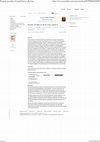
Journal of Web Semantics, 2019
Large collections of historical biodiversity expeditions are housed in natural history museums th... more Large collections of historical biodiversity expeditions are housed in natural history museums throughout the world. Potentially they can serve as rich sources of data for cultural historical and biodiversity research. However, they exist as only partially catalogued specimen repositories and images of unstructured, non-standardised, hand-written text and drawings. Although many archival collections have been digitised, disclosing their content is challenging. They refer to historical place names and outdated taxonomic classifications and are written in multiple languages. Efforts to transcribe the hand-written text can make the content accessible, but semantically describing and interlinking the content would further facilitate research. We propose a semantic model that serves to structure the named entities in natural history archival collections. In addition, we present an approach for the semantic annotation of these collections whilst documenting their provenance. This approach serves as an initial step for an adaptive learning approach for semi-automated extraction of named entities from natural history archival collections. The applicability of the semantic model and the annotation approach is demonstrated using image scans from a collection of 8, 000 field book pages gathered by the Committee for Natural History of the Netherlands Indies between 1820 and 1850, and evaluated together with domain experts from the field of natural and cultural history.
Available for free until January 23, 2020! Click here: https://authors.elsevier.com/c/1aAWX5bAYUWYbx
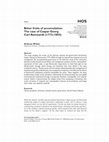
History of Science, 2014
This essay analyses the career of the German chemist and government functionary Caspar Georg Carl... more This essay analyses the career of the German chemist and government functionary Caspar Georg Carl Reinwardt (1773–1854) through the layered lens of governance and management. By conceptualizing governance as the historical result of the interaction between locally situated accumulation and management projects and the ‘metropolitan’ assessment of their value, it uses Reinwardt’s experiences to shed fresh light on the idiosyncrasies through which Europe and Southeast Asia were linked in the early nineteenth century. The discussion of three closely related episodes (the management of the botanical garden at Buitenzorg, the complexity of inquiries in the field and the failure of Reinwardt’s publication projects) exemplifies this point. Taken together, the essay problematizes simple center-periphery relationships by demonstrating that such global connections be understood through a comparison between ‘metropolitan’ and ‘colonial’ science. Rather it demonstrates the insights drawn from employing a framework that unites narratives of ‘imperial’ and ‘metropolitan’ histories of accumulation, and brings them under one analytical umbrella.
Itinerario: Journal of Imperial and Global Interactions, 2009
Journal of World History, 2017
Full text is here: https://muse.jhu.edu/article/663563
Let me know, if you can't get hold of it.
This essay introduces a special issue dedicated to the theme ‘accumulation and management in glob... more This essay introduces a special issue dedicated to the theme ‘accumulation and management in global historical perspective’. The concepts and practices of accumulation and management are explored in ways that work to de-center the history of science and empire. Particular attention is paid to four intertwined elements: 1) the networked location of centres of accumulation around the world; 2) (natural) knowledge as a tool, object and consequence of accumulation; 3) the complex interactions between management and governance; and 4] the geographically dispersed processes of ascribing value.
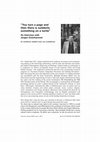
Itinerario, 2011
On 1 September 2011 Jürgen Osterhammel, professor of modern and contemporary history at the Unive... more On 1 September 2011 Jürgen Osterhammel, professor of modern and contemporary history at the University of Konstanz, and his wife, the historian and sinologist Sabine Dabringhaus (University of Freiburg), visited Leiden to participate in a conference on “Forms of Dynastic Power in Late Imperial China and Early Modern Europe.” The conference marked the start of a new comparative research program on “Eurasian Empires: Integration Processes and Identity Formation.” After discussing the aims and objectives of the new program in a highly stimulating roundtable with the fresh researchers, Itinerario (Andreas Weber and Jos Gommans) used the opportunity to have a talk with Jürgen Osterhammel about his career and the making of his recent masterpiece Die Verwandlung der Welt (The Transformation of the World). This monograph is a painstaking and thoughtprovoking attempt to write a global history of the nineteenth century. In more than 1,500 pages, Osterhammel offers a kaleidoscopic view on topics such as cities, frontiers, empires and nation states, nomads, music, science, religion, work, revolutions and living standards. Reviewers have praised the book for its thoroughness and innovative methodology, and an English translation will appear in the course of 2013. Already dazzling in itself, it is “just” the latest addition of an awe-inspiring oeuvre of one of the leading historians in Europe.
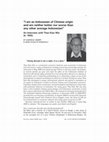
Itinerario, 2010
Thee Kian Wie is a prominent economic historian and economist in Indonesia who has known many of ... more Thee Kian Wie is a prominent economic historian and economist in Indonesia who has known many of Indonesia’s leading economists personally. Despite his retirement in May 2000 and advanced age (74) he is still very active. He publishes several articles per year and visits his office at the Indonesian Institute of Sciences LIPI almost daily, provided he is not somewhere abroad or in Jakarta or somewhere else in Indonesia participating in or delivering a paper at one of the international or national workshops to which he is invited. During his career Thee Kian Wie developed a unique international network and gained a reputation as an expert on Indonesia’s modern economic history and comparative economic, industrial, foreign direct investment, and technological development in East Asia, with particular reference to Indonesia. For many years Thee Kian Wie has also been a kind mediator helping young foreign and Indonesian researchers to find their way to informants and information. He received an honorary doctorate from The Australian National University, Canberra, in December 2004. In 2008 KITLV awarded him an honorary membership. In August 2008 he received the Sarwono Prawirohardjo Award from Professor Umar Anggara Jenie, the Head of LIPI, for his achievements in economic research and many years of service to LIPI. Itinerario interviewed him in Leiden in late October 2008 and in early May 2009 in Jakarta. The languages we spoke were Dutch and English.





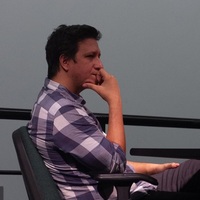

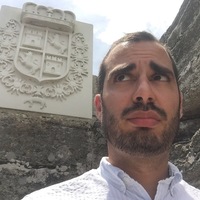



Uploads
Books & Special Issues by Andreas Weber
Kunstenaar op Java bevat de volledige transcripties van de reisdagboeken die Pieter van Oort bijhield tijdens zijn reizen op Java. Hij beschrijft met veel oog voor detail zijn dagelijks leven, zijn ontmoetingen, het landschap en de monumenten, lokale gebruiken en oude verhalen. De in deze editie opgenomen selectie tekeningen, die hij tijdens en vlak na de Java-Oorlog (1825-1830) maakte, schetst een fascinerend beeld van een flora en fauna zoals die vandaag niet meer in de Indonesische archipel te vinden is.
De verslaglegging van zijn latere reizen (1833-1834) is te vinden in deel 120 in de reeks van de Linschoten-Vereeniging: Kunstenaar op Sumatra.
The German chemist-apothecary Caspar Georg Carl Reinwardt (1773-1854) offers a fascinating window on Dutch culture and society in the late eighteenth and early nineteenth centuries. By providing an in-depth analysis of his multi-faceted career in the Netherlands and the Malay Archipelago, this study sheds light on the co-evolutionary character of science, governance, and empire. It argues that seeds of Reinwardt’s professional flexibility lay in his practical training in one of Amsterdam’s chemical workshops and his socialization in a broader cultural context where the improvement of society and economy played a crucial role.
Journal contributions & essay reviews by Andreas Weber
This essay forms part of a special issue on the European History of the former Dutch Empire in insular Southeast Asia, edited by Bernhard Schär (ETH Zürich)
Available for free until January 23, 2020! Click here: https://authors.elsevier.com/c/1aAWX5bAYUWYbx
Kunstenaar op Java bevat de volledige transcripties van de reisdagboeken die Pieter van Oort bijhield tijdens zijn reizen op Java. Hij beschrijft met veel oog voor detail zijn dagelijks leven, zijn ontmoetingen, het landschap en de monumenten, lokale gebruiken en oude verhalen. De in deze editie opgenomen selectie tekeningen, die hij tijdens en vlak na de Java-Oorlog (1825-1830) maakte, schetst een fascinerend beeld van een flora en fauna zoals die vandaag niet meer in de Indonesische archipel te vinden is.
De verslaglegging van zijn latere reizen (1833-1834) is te vinden in deel 120 in de reeks van de Linschoten-Vereeniging: Kunstenaar op Sumatra.
The German chemist-apothecary Caspar Georg Carl Reinwardt (1773-1854) offers a fascinating window on Dutch culture and society in the late eighteenth and early nineteenth centuries. By providing an in-depth analysis of his multi-faceted career in the Netherlands and the Malay Archipelago, this study sheds light on the co-evolutionary character of science, governance, and empire. It argues that seeds of Reinwardt’s professional flexibility lay in his practical training in one of Amsterdam’s chemical workshops and his socialization in a broader cultural context where the improvement of society and economy played a crucial role.
This essay forms part of a special issue on the European History of the former Dutch Empire in insular Southeast Asia, edited by Bernhard Schär (ETH Zürich)
Available for free until January 23, 2020! Click here: https://authors.elsevier.com/c/1aAWX5bAYUWYbx
much of the world’s biodiversity heritage is housed in Europe. Increasingly, natural
history institutions have started to address this history. However, computational
methods for analysing large collections often consist in static visualisations of
collection provenance. We argue that interactive visualisations allow users to
understand collections better: their content gaps as well as interesting patterns and
trends. Using a dataset containing metadata of five million entries from the botanical
collection of Naturalis Biodiversity Center, we created an interactive visualisation with
Microsoft PowerBI. The visualisation depicts colonial origins and the botany
collection’s movement to the Netherlands over time on an interactive map and timeline.
This project thus addresses a gap in historical research on the colonial legacy of Dutch
botanical collections, and also a gap in computer science research regarding
computational techniques for distant reading of natural heritage data. Our interactive
visualisation increases the accessibility of the available scientific data. It also
contributes to understanding the cultural history of natural history collections and
ultimately, highlights the importance of accurate and accessible visual representations
of biodiversity collection histories. This project suggests a way forward for natural
history museums grappling with their colonial past.
https://brill.com/view/title/56966
It requires either automated handwriting recognition techniques, or manual annotation by domain experts before the content can be semantically structured. Different workflows have been proposed to address this problem, involving full-text transcription and named entity extraction, with results ranging from unstructured files to semantically annotated knowledge bases. Here, we detail these workflows and describe the approach we have taken to disclose historical biodiversity data, which enables the direct labelling and semantic annotation of document images in hand-written archives.
For submission of essays, see here: https://www.cambridge.org/core/journals/itinerario/information/instructions-contributors
-------
The Brill series Emergence of Natural History (ENH) features books that examine the historic attitude of humans towards nature as an object of study, and the development of the field of knowledge we now know as natural history. Observing, collecting and explaining the diversity of nature has been important throughout history. This series addresses the many faces of natural history from the classical age up to the early nineteenth century. It is particularly designed to include volumes on the lives, work and networks of people whose contributions have proven foundational, but who have been overshadowed by more well-known figures such as Linnaeus and Darwin. Volumes encompass the global and cultural history of natural history, explore the role played by practitioners such as traveling naturalists, collectors, artists, and bring attention to indigenous, visual, and manuscript sources. Books may be scholarly monographs or edited works, but we also welcome well-researched exhibition catalogues or primary source editions with comprehensive introductions. Contributions that address underexplored figures, themes, and (visual) sources from an interdisciplinary and historical perspective are particularly encouraged.
For more information see also: http://www.brill.com/products/series/emergence-natural-history